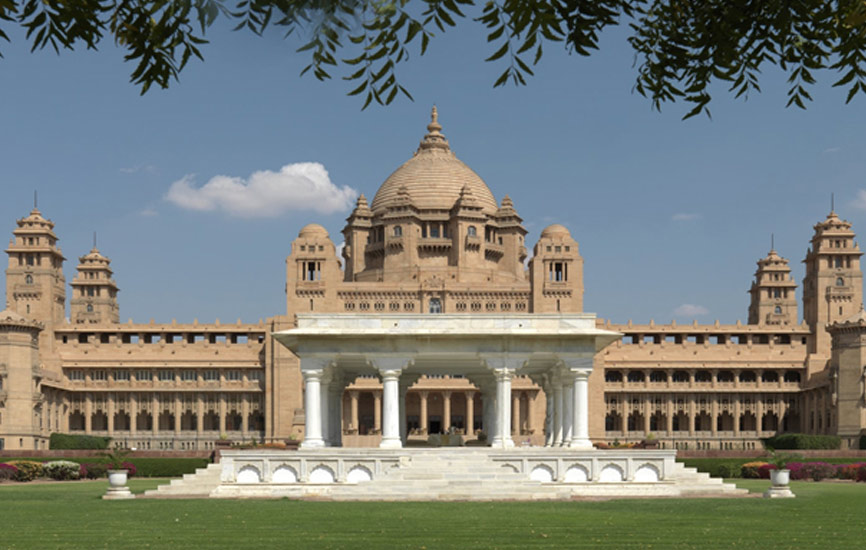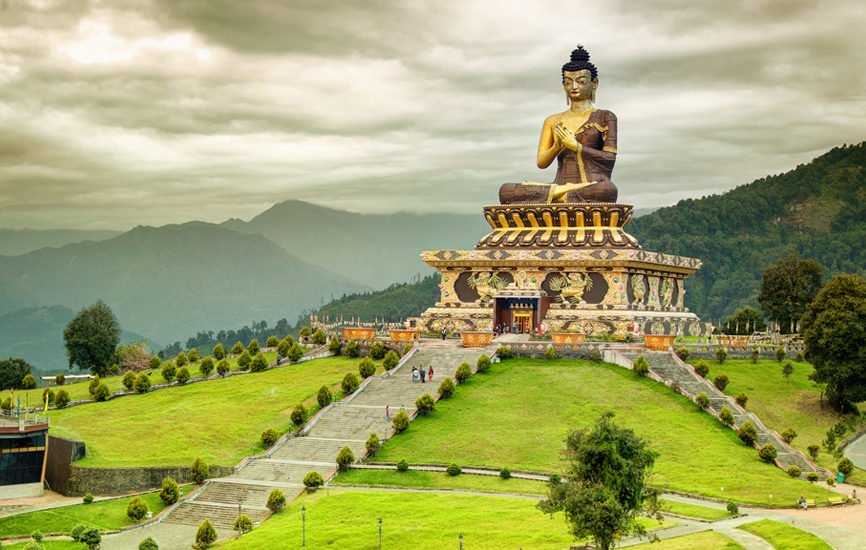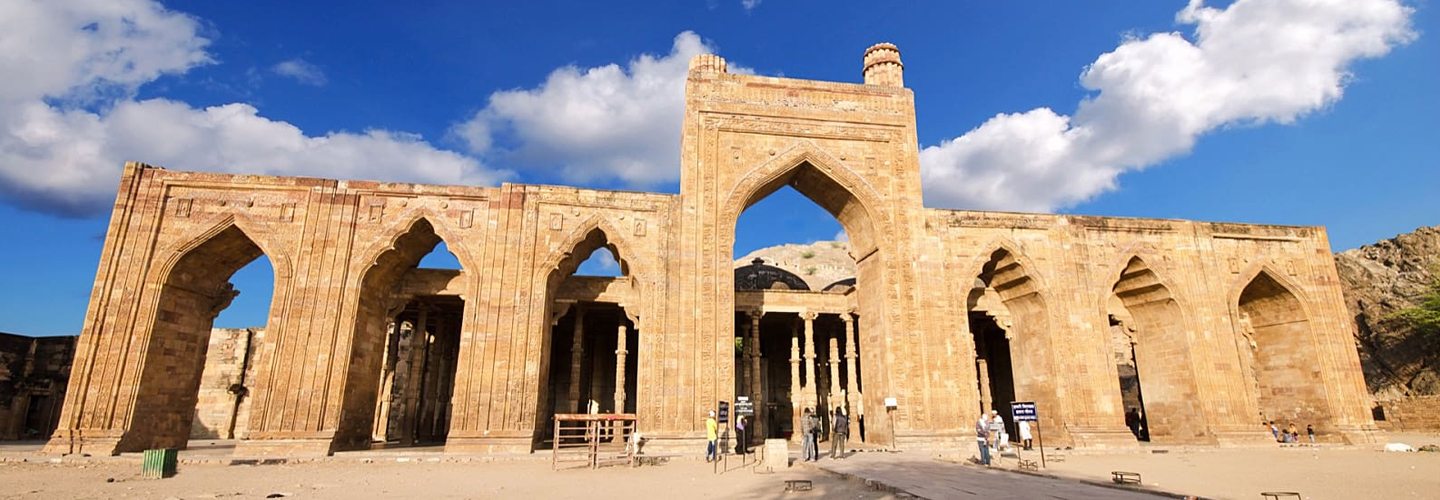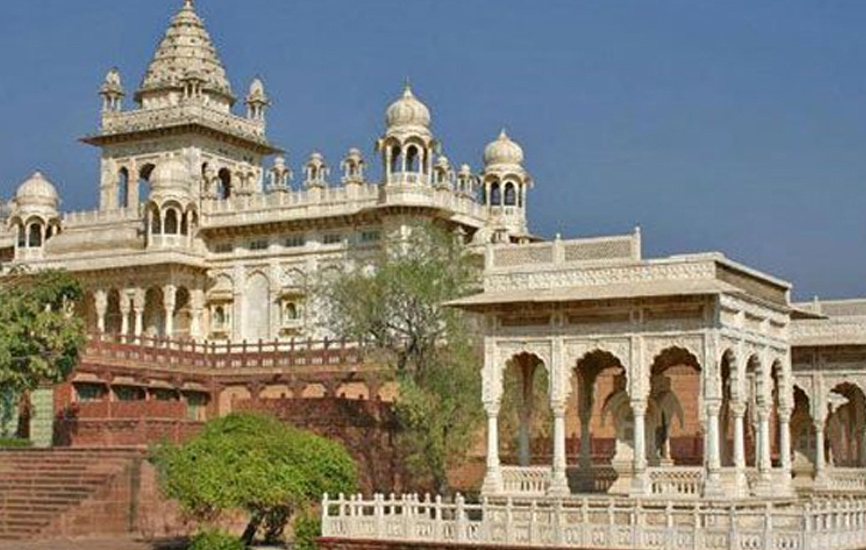20 Famous Forts and Palaces in Rajasthan

Rajasthan is popular for its royal ambience, colorful history and stunning fort and palaces. The lavishness and grandeur of these palaces tell tales about the time they were built. These forts are ideal example of the majestic architecture of Rajasthan. Made on high hill tops surrounded by deserts these forts and palaces have their own charm and charisma. Today’s tourists have a great prospect to experience the majesty of these forts and palaces first hand, by staying in them, as major ancient structures are running as heritage hotels. These architectural buildings built by the Rajputs and the Jats add to the glory of the state of Rajasthan.
How to reach Jaipur
By Air– Jaipur’s Sanganer Airport is the nearest towards the south of the city.
By Rail– Jaipur Station is well connected to Delhi by Ajmer Shatabdi and Delhi-Jaipur Express, to Mumbai by the Bombay Central-Jaipur and Aravalli expresses, and to Kolkata by the Howrah-Jaipur Express.
By Road– NH8 links Jaipur to Delhi via Shahpura and Dharuhera, and to Mumbai via Ajmer, Udaipur, Ahmedabad, Baroda, Bharuch, Pardi, Talasari and Manor.
1. Amber Fort, Jaipur

Built on the foothills of Aravalli, near the Maota Lake, the Amber fort is well known for its fine artistry laid on a four level layout. This fort is among the best places to visit in Jaipur and is carved out of red sandstone and marble. The architecture encompasses Hall of Public Audiences, Hall of Private Audiences, Sheesh Mahal and Sukh Niwas. It was built by Raja Man Singh I in the 16th century. The major tourist attraction here is the light and sound show held at Ksari Kyari in Amber Fort every evening.
How to reach Jaipur
By Air– Jaipur’s Sanganer Airport is the nearest towards the south of the city.
By Rail– Jaipur Station is well connected to Delhi by Ajmer Shatabdi and Delhi-Jaipur Express, to Mumbai by the Bombay Central-Jaipur and Aravalli expresses, and to Kolkata by the Howrah-Jaipur Express.
By Road– NH8 links Jaipur to Delhi via Shahpura and Dharuhera, and to Mumbai via Ajmer, Udaipur, Ahmedabad, Baroda, Bharuch, Pardi, Talasari and Manor.
2. City Palace, Jaipur

The architecture of this palace is an elegant blend of Rajasthani, Mughal and European style. This place has high historical significance. The City Palace was made in 1732 by Maharaja Sawai Jai Singh II. The palace has several gateways like Virendra Pol, Udai Pol, and Tripolia. The halls include Diwan-I-Khas and Diwan-I-Aam. Khana. There is a Bhaggi khana which means the hall to keep carriages and palanquins. The palace also includes a temple dedicated to Lord Krishna.
How to reach Jaipur
By Air– Jaipur’s Sanganer Airport is the nearest towards the south of the city.
By Rail– Jaipur Station is well connected to Delhi by Ajmer Shatabdi and Delhi-Jaipur Express, to Mumbai by the Bombay Central-Jaipur and Aravalli expresses, and to Kolkata by the Howrah-Jaipur Express.
By Road– NH8 links Jaipur to Delhi via Shahpura and Dharuhera, and to Mumbai via Ajmer, Udaipur, Ahmedabad, Baroda, Bharuch, Pardi, Talasari and Manor.
3. Jaigarh Fort, Jaipur

This fort is also known as Victory Fort. It was built by Jai Singh II in 1726 to safeguard the Amber fort and protect the city of Jaipur. It lies on the foot of Cheel Ka Teela. One of the key aspects of this fort is the huge cannon, Jaivana, which was the biggest cannon on wheels that time. The fort encompasses Laxmi Vilas, Lalit, Mandir, Vilas Mandir and Aram Mandir. Antiques and armors belonging to various to various Rajput clans are displayed in the museum here.
How to reach Jaipur
By Air– Jaipur’s Sanganer Airport is the nearest, towards the south of the city.
By Rail– Jaipur Station is well connected to Delhi by Ajmer Shatabdi and Delhi-Jaipur Express, to Mumbai by the Bombay Central-Jaipur and Aravalli expresses, and to Kolkata by the Howrah-Jaipur Express.
By Road– NH8 links Jaipur to Delhi via Shahpura and Dharuhera, and to Mumbai via Ajmer, Udaipur, Ahmedabad, Baroda, Bharuch, Pardi, Talasari and Manor.
4. Hawa Mahal, Jaipur

Situated in the midst of the busy city of Jaipur, the Hawa Mahal is a major historical landmark that witnesses the blend of Rajasthani and Mughal architectures. It was built by Maharaja Sawai Pratap Singh in the 18th century and designed by Lal Chand Utsa. It is built out of pink and red sandstones. It was built with the purpose of enabling the veiled ladies of the harem to observe unnoticed the lively street scenes below, through the many windows of the palace.
How to reach Udaipur
By Air– Nearest airport is Maharana Pratap Airport, Udaipur
By Rail– Udaipur Station has speedier connections with Delhi with the recently launched Mewar Express from Nizamuddin Station.
By Road– Udaipur is on NH8 which links Delhi to Mumbai via Jaipur and Ahmedabad. It is a 9hr drive from Jaipur, a 14hr drive from Delhi and a 17 hr drive from Mumbai.
5. City Palace, Udaipur

A fusion of Rajasthani, Mughal, European and Chinese architecture, the City Palce of Udaipur is an elegant structure. It is counted among the most beautiful palaces in Rajasthan. It was built by Maharana Udai Singh in the mid of the 16th century. There are three gateways: Bari Pol, Tripolia and Hathi Pol; and four palaces included in it viz: Dilkhush Mahal, Sheesh Mahal, Moti Mahal and Badi Mahal. The palace also has temples of Lord Krishna, Lord Shiva and Meera Bai and a museum.
How to reach Jaisalmer
By Air– Nearest airport is Jodhpur.
By Rail– Jaisalmer Station is well-connected to Delhi by the Delhi-Jaisalmer Express, which starts from Old Delhi Railway Station. Mumbai offers connections up to Jodhpur via Ahmedabad. From Jodhpur, there’s the Jodhpur-Jaisalmer Express.
By Road– Luxury buses connect Jaisalmer to Jodhpur, Bikaner and Jaipur.
6. Jaisalmer Fort

This fort was built by Rawal Jaisal in the mid of 12th century. This fort is also called as Sonar Quilla, owing to the yellow sandstone structure it has. The fort stands tall on the peak of the 80 m high Trikuta Hill. The fort includes Royal palaces, a cluster of Jain temples, mansions and shops all within its walls. There are several hotels, eateries and restaurants where visitors can experiment with typical Rajasthani cuisine and other Indian and international delicacies.
How to reach Jodhpur
By Air– Jodhpur Airport is connected by IA, which flies three times a week from Delhi, Mumbai, Jaipur and Udaipur. Jet Airways has daily flights from Mumbai and flights four days a week to Delhi.
By Rail– Jodhpur Junction is connected by Mandore and Intercity expresses from Old Delhi; and by Rajasthan Sampark Kranti from Sarai Rohilla, which runs on alternate days. Suryanagari Express from Bandra, Mumbai, is the best option via Ahmedabad and it runs on alternate days; also Ranakpur Express from Bandra via Ahmedabad and Surat and the Howrah-Jaipur Express.
By Road– Travelers from Delhi should turn off NH8 onto NH11 at Beawar. At Bar, turn right onto the state highway to Jodhpur via Pilara.
7. Mehrangarh Fort, Jodhpur

Mehrangarh is one of the majestic forts in Rajasthan and is built out of a 125m high rock. Rudyard Kipling described it as the creation of angels, fairies and giants. It was founded in 1459 by Rao Jodha. Later Jaswant Singh extended the fort between 1638 and 78. The fort has observed a number of battles in opposition to the Jaipur and Bikaner army. Within the fort there are several palaces – Moti Mahal, Phool Mahal, Sheesha Mahal, Sileh Khana and Daulat Khana which are prominent for having delicate architectural works.
How to reach Bikaner
By Air– The nearest airport is Jodhpur, connected by daily flights to Jaipur, Delhi, Udaipur and Mumbai.
By Rail– Bikaner Junction is well-connected to Delhi by the Bikaner Mail, to Mumbai by the Jammu Tawi and to Kolkata by the Howrah-Jodhpur Express. The Jaipur-Bikaner Intercity and Jaipur-Bikaner express trains are the best options to Jaipur. Both taxis and autos are easily available at the station.
By Road– Bikaner is at the western end of NH11 that links Agra to Jaipur. Travelers from Delhi should turn off NH8 at Kot Putli and take the road to Sikar via Nim ka Thana and Khandela. From here, take NH11 to Bikaner.
8. Junagarh Fort, Bikaner

It was constructed by Rai Singh, the third ruler of Bikaner, between 1587 and 1593. The Junagarh fort is safeguarded by a 986 m long sandstone wall with 37 bastions, a moat and significantly by the Thar deserts. It has a rich history, that no army could ever conquer the fort. The 4 walls of the fort encompasses 37 abundantly bedecked palaces, temples and pavilions, built by its following rulers over the centuries. Dating to 1595, the old most palace in the fort is Lal Niwas which is adorned with floral motifs in red and gold.
How to reach Chittorgarh
By Air– Nearest airport is Dabok Airport, Udaipur, well-connected to Delhi, Mumbai, Jodhpur and Jaipur by daily flights.
By Rail– Chittorgarh Station is linked to Delhi by the Nizamuddin-Udaipur Express and to Jaipur by the Mewar Express. There are some other good options between Udaipur and Chittorgarh.
By Road– NH8 connects Jaipur and Delhi to NH79 at Ajmer, along which Chittor is a 3.5 hr drive away via Nasirabad and Bhilwara.
9. Chittorgarh Fort, Chittorgarh

This fort is a symbol of valor, romance and chivalry of the Rajputs. It reminds of the battle scarred fort. As it is one of the mightiest forts it was targeted by successive invaders. In 1303, it was targeted by Sultan Alauddin Khilji who wanted to capture not just the fort but also queen Padmini, whose beauty was known all over the kingdom. When defeat was unavoidable, Rani Padmini together with 13,000 women performed jauhar – a custom form of mass suicide by immolation, practiced by Rajput women to escape dishonor.
How to reach Udaipur
By Air– Nearest airport is Maharana Pratap Airport, Udaipur, connected to Jaipur, Jodhpur, Aurangabad, Delhi and Mumbai.
By Rail– Udaipur Station has speedier connections with Delhi with the recently launched Mewar Express from Nizamuddin Station.
By Road– Udaipur is on NH8 which links Delhi to Mumbai via Jaipur and Ahmedabad. It is a 9 hr drive from Jaipur, a 14 hr drive from Delhi and a 17 hr drive from Mumbai.
10. Lake Palace, Udaipur

The fort was built by Maharana Pratap Singh II between 1743 and 1746. Earlier the fort was known as Jagniwas. It is a fine marble masterpiece. At the present day, it is one of the key attractions in Udaipur. It was taken over by the Taj Group of Hotels in 1971. The original property includes gracefully crafted 83 rooms offering a imperial touch, restaurants, recreational centers, pools and business centers. It is believed to be one of the most romantic luxury hotels in India.
How to reach Taragarh Fort, Bundi
By Air– Nearest airport is Sanganer, Jaipur.
By Rail– Nearest railhead is Kota Junction, on the Delhi-Mumbai rail route.
By Road– Bundi is located on NH12 between Jaipur and Kota. There are frequent buses from Kota to Bundi and the journey by bus takes about an hour.
11. Taragarh Fort, Bundi

This fort is also known as the jewel of Rajasthan. The fort has three gateways- Lakshmi Pol, Phuta Darwaza and Gagudi Ki Phatak. The fort is mostly in ruins today. The construction of the fort bears an impression of the Chauhan Dynasty. The fort includes excellent network of tunnels. The fort includes huge water reservoirs, a small palace with stained glass and a tomb that is known as “Miran Saheb Ki Dargah”. Rather than sandstone, the fort is built with green-tinged serpentine stone.
How to reach Jodhpur
By Air– Jodhpur Airport is connected by IA, which flies three times a week from Delhi, Mumbai, Jaipur and Udaipur. Jet Airways has daily flights from Mumbai and flights four days a week to Delhi.
By Rail– Jodhpur Junction is connected by Mandore and Intercity expresses from Old Delhi; and by Rajasthan Sampark Kranti from Sarai Rohilla, which runs on alternate days. Suryanagari Express from Bandra, Mumbai, is the best option via Ahmedabad and it runs on alternate days; also Ranakpur Express from Bandra via Ahmedabad and Surat and the Howrah-Jaipur Express.
12. Umaid Bhavan Palace, Jodhpur

This palace is a key example of royal India’s affluence. It includes 347 rooms which consist of 8 dining halls, two theaters, ballroom, reception hall and a huge underground swimming pool. The construction of this palace was undertaken by Maharaja Umaid Singh mainly to provide livelihood to its famine-stricken citizens. The construction work began in 1929 by more than 3000 artists and took 15 years to complete. At present, the hotel has been divided into 3 areas-the royal apartments, the hotel run by Taj Group and a Museum.
How to reach Jaipur
By Air– Jaipur’s Sanganer Airport is the nearest, towards the south of the city.
By Rail– Jaipur Station is well connected to Delhi by Ajmer Shatabdi and Delhi-Jaipur Express, to Mumbai by the Bombay Central-Jaipur and Aravalli expresses, and to Kolkata by the Howrah-Jaipur Express.
By Road– NH8 links Jaipur to Delhi via Shahpura and Dharuhera, and to Mumbai via Ajmer, Udaipur, Ahmedabad, Baroda, Bharuch, Pardi, Talasari and Manor.
By Road– Travelers from Delhi should turn off NH8 onto NH11 at Beawar. At Bar, turn right onto the state highway to Jodhpur via Pilara.
13. Jal Mahal, Jaipur

This palace is situated in the middle of Man Sagar Lake. It is a beautiful masterpiece of Rajasthani and Islamic type of architecture. The palace is constructed using red sandstone. It was built by Maharaja Jai Singh II of Amber, in the 18th century. It is a five storied building. It has intricately designed hallways and rooms with and exquisite wall paintings. There is a beautiful garden on the terrace. Visitors can take a boat ride in the Man Sagar Lake, and sense the scenic beauty around the palace.
How to reach Shekhawati
By Air– Jaipur’s Sanganer Airport is the nearest to the city.
By Rail– Jaipur Station is the nearest and well connected railway station
By Road– It is 245km away from Kota via RJ SH 70 – NH 12.
14. Ratangarh Fort, Shekhawati

The fort is situated on the Agra-Bikaner highway and was built in the 19th century by Ratan Singh. Several of its monuments are in ruins today. It was once the inhabitant of Rao Shekha. Shekhawati is a traveler’s heaven. Shekhawati is adorned with numerous stunning havelis with murals and wall paintings. Sethani Ka Johara, Tal Chhapar Sanctuary, Ramgarh are some of the tourists attractions.
How to reach Jaipur
By Air– Jaipur’s Sanganer Airport is the nearest towards the south of the city.
By Rail– Jaipur Station is well connected to Delhi by Ajmer Shatabdi and Delhi-Jaipur Express, to Mumbai by the Bombay Central-Jaipur and Aravalli expresses, and to Kolkata by the Howrah-Jaipur Express.
By Road– NH8 links Jaipur to Delhi via Shahpura and Dharuhera, and to Mumbai via Ajmer, Udaipur, Ahmedabad, Baroda, Bharuch, Pardi, Talasari and Manor.
15. Nahargarh Fort, Jaipur

This fort is situated on the edge of Aravali hills near the pink city Jaipur. It was built by Maharaja Sawai Jai Singh II in 1734 as summer recoil. Later it was extended by Sawai Ram Singh in 1868. During 1883 and 1892, Sawai Madho Singh ramped up several of its palaces. Jaigarh fort is connected to this fort via an extended wall. This fort was a hide out for the British army at the time of the Indian Rebellion of 1857. Today, this fort is a major attraction among tourists owing to its panoramic view of the Jaipur city. A huge assortment of armors and paintings is displayed in the museum in the fort complex. The fort also includes a roof top restaurant where one can chill and enjoy.
How to reach Bharatpur
By Air– The Nearest Airport is Sanganeer Airport (JAI) Jaipur and Indira Gandhi International Airport, New Delhi
By Rail– The closest railway station is Bharatpur Junction (BTE).
By Road– It is 330 kms away from Kota via RJ SH 70 – RJ SH 1.
16. Lohagarh Fort, Bharatpur

Situated in the heart of the town of Bharatpur lies the Lohagarh Fort also called as the Pride of India. It is so called as it has been able to defend British and mughal army. Much like its name suggests it is one of the strongest structures in Indian history. The Jat ruler Maharaja Suraj Mal, built the fort. The work started in 1732 and ended after 60 long years. There are several stories about the fort. It has two gates: The Ashtadhatu Gate and the Loha Gate made out of metals. The Ashtadhatu gate is built out of 8 metals and it is believed that it was carried to Delhi by Sultan Alauddin Khilji after he defeated the Rajputs in the 13th century.
How to reach Bharatpur
By Air– The Nearest Airport is Sanganeer Airport (JAI) Jaipur and Indira Gandhi International Airport, New Delhi
By Rail– The closest railway station is Bharatpur Junction (BTE).
By Road– It is 330 kms away from Kota via RJ SH 70 – RJ SH 1.
17. Deeg Palace, Bharatpur

It was built as a royal summer resort by the Jat rulers, in 1772. It is a perfect specimen of traditional Mughal architecture. The rooms are artistically designed, the windows are crafted with fine art and there are ornate beams and marble jalis. It also includes a pavilion, called Keshav Bhawan, that has a canal and several fountains. After Lohagrah Fort and the Bharatpur bird sanctuary, it is one of the most popular and not to be missed place in Bharatpur.
How to reach Sawai Madhopur
By Air– The Nearest Airport is Sanganeer Airport (JAI) Jaipur
By Rail– The closest railway station is Sawai Madhopur (SWM).
By Road– It is 145kms away from Kota via Siwar Bagina Sawai Madhopur Shyampura Bhureri Phari.
18. Ranthambore Fort, Sawai Madhopur

It is one of the oldest forts in Rajasthan having settlement near Sawai Madhopur. The construction of this fort started in 8th century AD. It was built during the reign of Chauhan Rajput King Sapaldaksha. Very close to the main gate is the Ganesha temple. It is a must visit place for those who are in for a wildlife safari at Ranthambore National Park. The fort has been a silent witness of several attacks by the Sultans of Delhi and the Kings of Mewar and the Mughals.
How to reach Sawai Madhopur
By Air– The Nearest Airport is Sanganeer Airport (JAI) Jaipur
By Rail– The closest railway station is Sawai Madhopur (SWM).
By Road– It is 145kms away from Kota via Siwar Bagina Sawai Madhopur Shyampura Bhureri Phari.
19. Vinay Vilas Mahal, Alwar

The City Palace of Alwar is known by the name Vinay Vilas Mahal. It is situated in the heart of Alwar city. It was built during 1793 AD by Raja Bakhtawar Singh. The architecture is a blend of Rajput and Mughal styles. Earlier it was the living abode of the Maharajas, but now the palaces have been converted into the district’s collectorate, and its hall and chambers have been turned into government offices. The fort has several gates – Jai Pol, Suraj Pol, Laxman Pol,Chand Pol, Kishan Pol and Andheri Gate. The fort maintains a well stocked museum with a rich collection of antiques, manuscripts, miniature and paintings
How to reach Bikaner
By Air– The nearest airport is Jodhpur, connected by daily flights to Jaipur, Delhi, Udaipur and Mumbai.
By Rail– Bikaner Junction is well-connected to Delhi by the Bikaner Mail, to Mumbai by the Jammu Tawi and to Kolkata by the Howrah-Jodhpur Express. The Jaipur-Bikaner Intercity and Jaipur-Bikaner express trains are the best options to Jaipur. Both taxis and autos are easily available at the station.
By Road– Bikaner is at the western end of NH11 that links Agra to Jaipur. Travelers from Delhi should turn off NH8 at Kot Putli and take the road to Sikar via Nim ka Thana and Khandela. From here, take NH11 to Bikaner.
20. Lalgarh Palace, Bikaner

Built by the then Maharaja of Bikaner, Lalgarh Palace is a masterpiece of architecture. It was constructed in between 1902 and 1926 It is a lavish structure, both, in terms of history as well as affluence. It has huge wings with grand corridors all embellished with paintings. The fort is a great blend of history, royalty and architecture. One can sense the brilliance of this palace by staying at its part which has been converted into a hotel. Today, two wings of the Lalgarh Palace have been reincarnated as luxury heritage hotel with 59 rooms that combine the best of modern conveniences with vintage furnishings. You can bask in the historic glory of this lavish palace. Nearby tourist attractions are Maru Nayak Ji Temple, Laxmi Nath temple, Bhandasar Temple, Mukam Temple, Karni Mata Temple etc.




